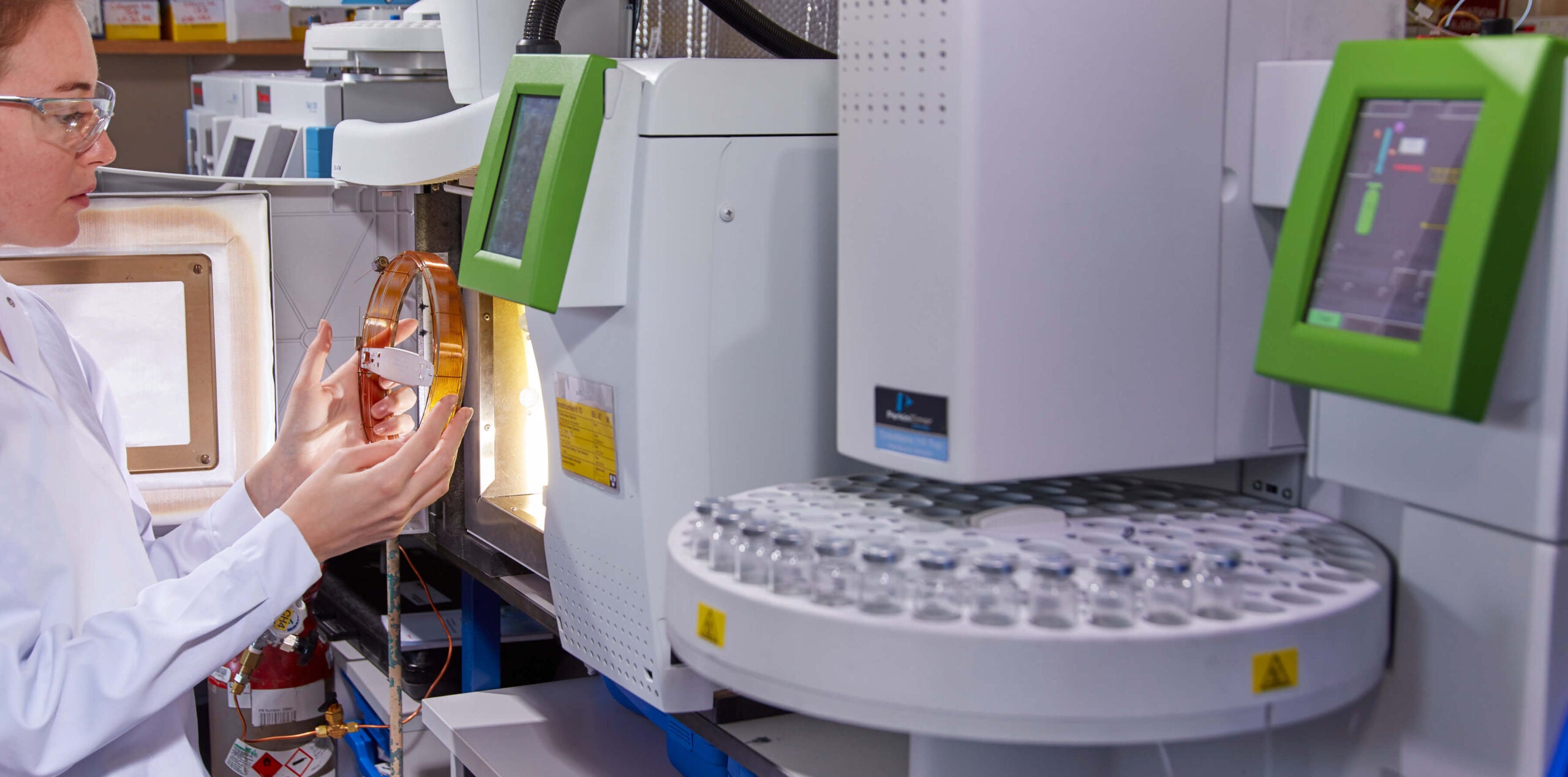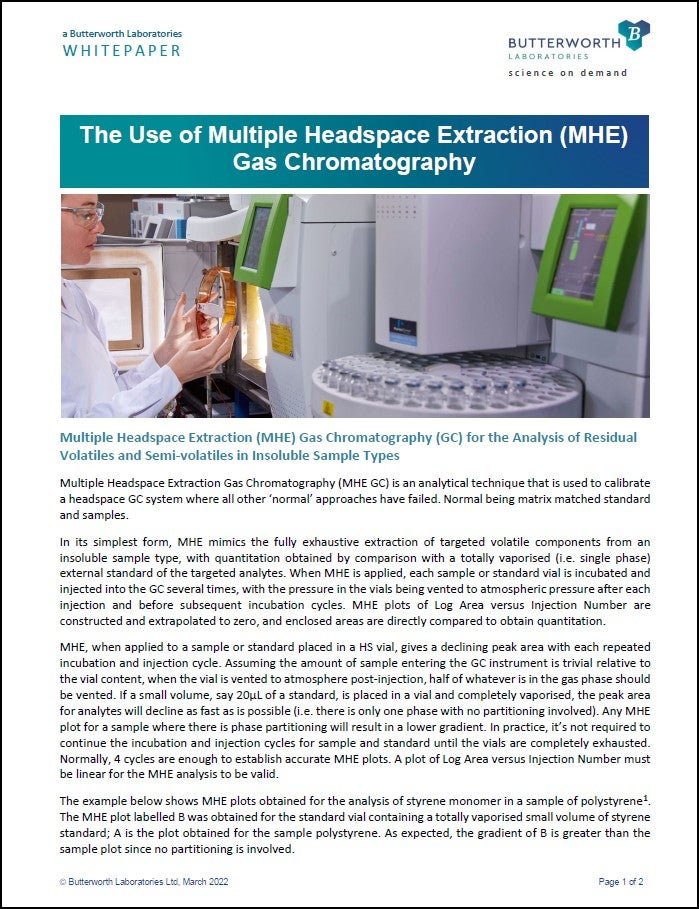
Frank Judge is a consultant chemist at Butterworth Laboratories Limited, an independent contract testing laboratory in the UK. He has worked at Butterworth for almost 30 years and shares with Pharmaceutical Technology his recollections of the past three decades of residual solvent analysis in the Butterworth laboratory.
In 1988, the United States Pharmacopeia first published General Monograph <467>, Organic Volatile Impurities (OVI), which addressed the control of just seven specified Residual Solvents. When Judge joined Butterworth Laboratories in 1994, the chromatography lab was already carrying out OVI testing, utilising both direct injection and headspace procedures of <467>.
The rise of headspace GC systems
1996 saw the implementation of the first automated headspace GC system in response to increased client demand. Much of this testing was “blind compliance”, since the seven targeted solvents were practically never used in the production of pharmaceutical articles. The end of the decade witnessed a huge increase in headspace residual solvents analysis at Butterworth, both for compliance to <467> and the development of product-specific screening procedures based on the solvents used in production.
By 2005, Butterworth had six headspace GC systems, just in time for what was to be another period of dramatic increase in requirement for headspace analysis. That year, a completely revised chapter <467> renamed “Residual Solvents” was published which adopted the ICH Q3C classification and limits for residual solvents based on toxicity. The chapter included headspace procedures for the screening of the five Class 1 and 23 Class 2 solvents.
This was a cause for excitement in the chromatography lab at Butterworth, since the company had already built considerable experience in the headspace analysis of residual solvents. Butterworth now saw a chance not only for an increase in revenue, since the new monograph was much more labour intensive and time consuming, but also for a chance to showcase its chromatography skills in this area.
However, there was a further inclusion in the 2005 USP which caused panic throughout the industry, caused by perhaps the shortest statement ever made in the USP to have the greatest impact. This was USP General Notices 5.60.20 which stated that “All USP and NF articles are subject to the relevant control of residual solvents, even when no test is specified in the individual monograph.” This meant that hundreds of pharmaceutical substances previously not prescribed to comply with <467> would now be required to do so.
Since manufacturers tend to have limited GC capabilities, there were many calls to Butterworth seeking assurance that the company would be set up to carry out the new <467> procedure by the 2006 implementation date. Even more calls were made to the USP and FDA asking for more time to prepare, and the implementation was postponed an extra year not once but twice. By the time the revised chapter and general notice were finally implemented in 2008, Butterworth had already verified its use of the new procedure.
The development of residual solvent analysis at Butterworth
With the implementation of the new general chapter, some laboratories were reporting difficulty in demonstrating enough sensitivity to comply with the signal to noise system suitability requirement for the low level Class 1 reference standard. It had already been realised at Butterworth that the problem was not in fact one only of chromatographic sensitivity, but was at least in part due to the solution preparation scheme of <467>, particularly the multi-level aqueous dilution of the hydrophobic Class 1 standard components.
Butterworth proposed an alternative dilution scheme which involved only a single step. In 2009, Judge was asked by the USP to present Butterworth’s alternative method and experience of <467> at a symposium of the Joint Pharmaceutical Analysis Group, which greatly increased clients’ confidence in Butterworth’s practical application of <467>.
In 2010, Butterworth issued an in-house GC-headspace procedure for the fully quantitative analysis of named Class 1, 2 and 3 headspace amenable residual solvents. This was used where solvents present were known or targets had been identified by <467> screening. This procedure includes multi-level calibration and demonstration of spike recovery at 50% of the limit.
In 2015, Butterworth issued another USP-compliant in-house headspace screening procedure (at ICH limits) for all headspace-amenable Class 1, 2 and 3 solvents (64 individual targets) but still excluding the 12 non-volatile problem solvents. This procedure includes the alternative standard preparation schemes developed at Butterworth with reduced number of dilution steps.
In April 2021, Butterworth issued yet another, USP-compliant, generic screening procedure for the analysis of ten of the 12 non-headspace ICH solvents by direct injection GC. The method includes extensive quality control requirements such as standard repeatability, resolution, signal to noise and spike recovery. Another advantage of this procedure is that it takes into consideration the solubility of the sample material.
Things never stand still at Butterworth and the Chromatography Team have started the process of producing a validated generic HPLC based procedure for the residual solvents, Formic and Acetic Acids in Water and Acetonitrile soluble substances. Once completed, Butterworth will be able to screen samples for all 76 ICH target solvents using only three procedures. No doubt there will be future challenges and changes to the Residual Solvents monographs in the USP, EP and other national monographs, which will require further changes and updates to these procedures. But Butterworth is confident, given its record of keeping abreast of the various changes so far, that it will continue to provide this service for the foreseeable future.



